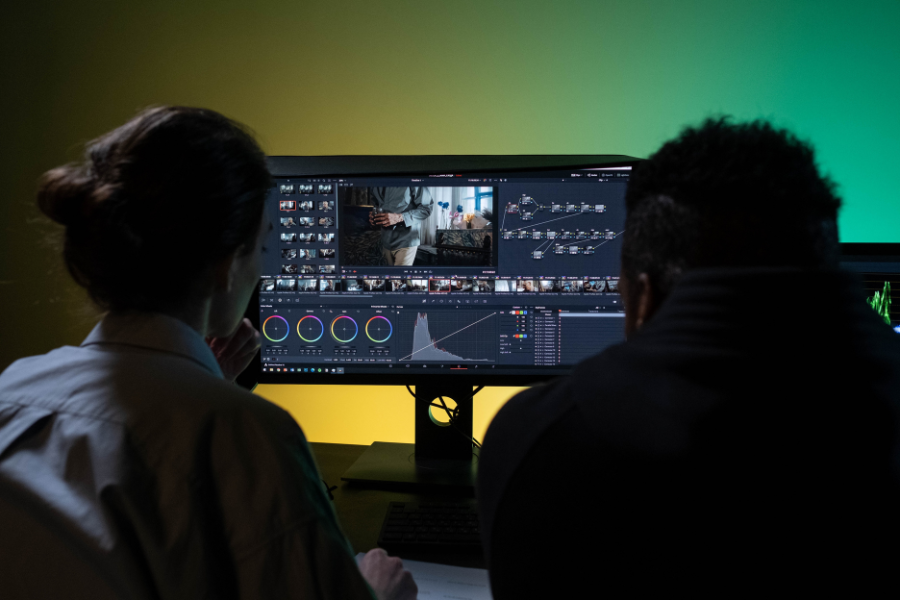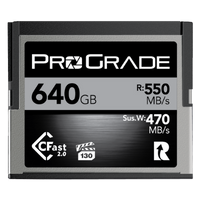In the rapidly evolving world of videography, technological advancements continue to reshape the landscape, revolutionizing the way videos are produced, edited, and consumed. Among these advancements, artificial intelligence (AI) and machine learning have emerged as powerful tools, bringing unprecedented possibilities and efficiencies to the field.
In this article, we will delve into the impact of AI and machine learning in videography, exploring how these technologies streamline video production and editing processes. We will discuss the benefits and challenges they bring, showcase innovative case studies, and provide insights into the future trends of AI and machine learning in the realm of videography. So, join us on this exciting journey as we unlock the potential of AI and machine learning in shaping the future of videography and video editing.
What is AI?
AI refers to the simulation of human intelligence in machines, enabling them to perform tasks that typically require human intelligence, such as perception, learning, reasoning, and decision-making. Machine learning, a subset of AI, empowers machines to learn from data and improve their performance over time without explicit programming.
AI in Video Production: Streamlining the Creative Process
AI and machine learning technologies have found various applications in the ever-evolving video production landscape, revolutionizing the creative process and streamlining workflows. They enable automated video editing processes, facilitate object and scene recognition, enhance post-production tasks, and even generate creative content.
Integrating AI technologies brings unprecedented possibilities for videographers, empowering them to optimize their time, efficiency, and creative output. By automating repetitive and time-consuming tasks, videographers can focus more on their creative vision and storytelling.
Moreover, AI enables videographers to harness the power of predictive analytics in video production. By analyzing historical data and performance metrics, AI algorithms can predict audience preferences and engagement patterns, providing valuable insights for content creators. This data-driven approach allows videographers to tailor their content to specific target audiences, increasing the chances of capturing attention and maximizing viewer engagement.
The Role of Machine Learning in Video Editing
Machine learning, a subset of artificial intelligence (AI), has emerged as a transformative force in the realm of video editing.
One of the critical contributions of machine learning in video editing is its ability to automate labor-intensive tasks. Traditionally, video editing involves manually identifying and categorizing footage, trimming clips, adjusting transitions, and applying visual effects. By leveraging deep learning algorithms, AI-powered editing tools can automatically analyze raw footage, recognize key moments, and automatically generate edited versions of videos automatically. This automation eliminates the need for manual, time-consuming editing tasks.
AI also plays a crucial role in content analysis and organization. Through advanced computer vision algorithms, AI tools can analyze video content, extract metadata, and tag elements such as objects, scenes, and emotions. This automated analysis enables editors to efficiently search, categorize, and organize video libraries.
Another aspect where AI excels in video production is putting in the finishing touches. Machine learning algorithms can automate color grading, audio enhancement, and visual effects. By learning from human editing decisions, AI algorithms can apply similar adjustments to achieve consistent visual styles throughout the video and offer suggestions or automate steps that align with the editor’s preferences. This personalized approach enhances efficiency and enables editors to work more intuitively.
The precision offered by machine learning algorithms in video editing is remarkable. For example, algorithms can be trained to identify and track objects or faces within a video, making it easier to apply effects or annotations accurately. Additionally, machine learning algorithms can analyze audio patterns and automatically synchronize audio tracks, eliminating the need for manual adjustments.
AI-Driven Automation in Videography: Pros and Cons
AI-driven automation offers substantial benefits in videography. However, besides increased efficiency, precision, and time savings, it is crucial to be aware of the potential challenges that come with this technology.
One of the main challenges of AI-driven automation is the potential loss of the human touch in the creative process. As automation takes over certain manual tasks, there is a risk of standardized output and a reduced sense of artistic expression. As a result, striking a balance between automated processes and maintaining a unique creative vision may become harder.
Further, the dependence on data quality poses a challenge for AI-driven automation, especially in the early stages of adoption. The accuracy and reliability of AI algorithms rely heavily on the quality and diversity of the data used for training. Inadequate or biased data can lead to inaccuracies or limitations in the automated processes, impacting the overall effectiveness of AI-driven automation in videography.
Finally, another challenge lies in the learning curve associated with adopting AI-driven tools. Filmmakers must invest time and effort to familiarize themselves with these tools, understand their capabilities, and integrate them seamlessly into their existing workflows. This initial adjustment period may pose challenges for professionals accustomed to traditional editing methods.
Navigating AI’s Challenges: Overcoming the Roadblocks on the Path to Innovation
To overcome these challenges, such as the loss of the human touch, the learning curve associated with adopting new tools, and dependence on data quality, you can implement specific strategies.
Firstly, actively infuse your unique artistic expression into the editing process to find the balance between automated processes and maintaining the human touch. That way, you’ll ensure that your creative vision shines through despite the automation.
Continuous learning and training on AI-driven tools are essential to effectively navigate the learning curve. Start investing time to familiarize yourself with the tools. By exploring their capabilities in their infancy and integrating them into your existing workflows early, you stay ahead of the curve and learn as they evolve into increasingly complex machines.
Lastly, ensuring you have high-quality and diverse data for training AI algorithms is vital. You should carefully curate and validate the data to minimize biases and maximize the accuracy and reliability of automated processes. By implementing these recommendations, videographers can effectively overcome the challenges and leverage the benefits of AI-driven automation in videography.
Case Studies: Innovative Uses of AI and Machine Learning in Videography
The integration of AI and machine learning in videography has led to groundbreaking innovations, pushing the boundaries of what is possible in video production. Let’s explore the five most inspiring case studies demonstrating AI’s and machine learning’s innovative applications in videography.
1. AI in Sports Videography – IBM Watson and The Masters Tournament:
During the prestigious Masters golf tournament, the innovative AI technology of IBM Watson took center stage, revolutionizing the creation of captivating highlights. With an intricate understanding of the game’s rules, Watson went beyond the basics, delving into the realm of player reactions, crowd noise, and various other factors to identify exhilarating moments. This groundbreaking approach enabled swift curation and distribution of highlight reels, shattering the confines of traditional video editing and sparing valuable time and resources. The fusion of AI and the Masters golf tournament showcased the immense potential of AI in video editing, empowering the world of sports with its ability to transform the way we experience and share thrilling sporting moments.
2. Artificial Intelligence in Filmmaking – “Sunspring”:
“Sunspring” is a short science fiction film written by an AI named Benjamin. Trained on dozens of sci-fi scripts, Benjamin crafted a script that was then filmed by human actors. Although the resulting narrative may have been deemed nonsensical, “Sunspring” stands as an intriguing experiment, offering a glimpse into the potential role of AI in scriptwriting and the generation of new and unconventional narratives. This extraordinary blend of human and artificial intelligence opens a doorway to a realm where creativity knows no bounds, sparking endless possibilities for the future of storytelling.
3. AI in Video Optimization – YouTube’s Machine Learning Algorithms:
Machine learning fuels YouTube’s immersive video experience, from personalized recommendations to optimized video quality. The recommendation engine analyzes user behavior, suggesting videos aligned with viewers’ interests. This ensures viewers receive content tailored to their interests, creating an engaging video-watching journey. AI also detects and enhances video quality, automatically adjusting parameters like resolution and bitrate based on network conditions.
4. Machine Learning in Color Correction – Color.io:
Color.io, a visionary startup, has also harnessed the power of machine learning. This time, to revolutionize color correction. With meticulous training on professionally color-graded images and videos, their AI system has transcended its training grounds and can now suggest precise color corrections for new footage. Paving the way for future technology in videography.
5. AI in Video Surveillance – Avigilon:
Avigilon, a prominent entity under the Motorola Solutions umbrella, is at the forefront of leveraging AI and machine learning in video surveillance solutions. Their cutting-edge AI technology has unlocked a new dimension in security, empowering video feeds to be meticulously analyzed for exceptional detection capabilities. By swiftly recognizing anomalous activities and tracking individuals across multiple cameras, their AI system generates timely alerts, alleviating the burden on human operators and revolutionizing the efficiency and effectiveness of video surveillance systems. Avigilon’s commitment to harnessing the power of AI and machine learning has ushered in a new era of intelligent security, bolstering the protection of critical assets and ensuring unparalleled peace of mind.
Future Trends: What to Expect from AI and Machine Learning in Videography
While present-day AI advancements have dazzled us, the future holds even more breathtaking possibilities.
Consider a curious viewer embarking on a quest for knowledge through a simple Google search. With each keystroke, the anticipation builds, and to their amazement, the answer they seek materializes in a video. Little do they know that this video is the product of AI-driven production, meticulously crafted and rendered to address their specific query. Every aspect of the production is entirely run by AI. Seamlessly blending script writing, speech recognition, natural language processing, and machine learning, the AI-generated video offers a concise and tailored response.
While this innovative fusion of AI and information retrieval may be something we still have to wait for, Real-time Cinematic Editing and Intelligent Video Production are soon to become a reality. AI is on the road to becoming a creative collaborator. Machine learning algorithms will evolve to possess an artistic intuition, generating compelling video concepts and storylines. Furthermore, through an intricate understanding of storytelling principles and vast media repositories, AI will offer videographers unprecedented inspiration and suggestions, unlocking new realms of creativity.
AI and machine learning are also becoming more capable of analyzing video content in real time. Not only to automatically apply dynamic transitions, color grading, and visual effects but to communicate with the director and cinematographer whether the shot they just tail slated delivers the desired emotion and what could be done to captivate viewers even further.
Final Thoughts: Embracing AI and Machine Learning in Videography
Embracing the power of AI and machine learning is an exhilarating leap into the future. These dynamic technologies unleash a wave of creativity, propelling us to new heights of innovation and possibility. As we dance hand-in-hand with AI, we unlock streamlined workflows, boundless creative potential, and personalized viewer experiences for our audience. So, don’t shy away from this exciting realm. The sooner you embrace the magic of AI in videography and the fusion of AI and human ingenuity, the surer it is you are the one who shapes a future that knows no bounds.
Limitless imagination needs limitless possibilities. Embrace tomorrow with ProGrade Digital memory cards, where innovation meets storage excellence. With lightning-fast speeds and unmatched reliability, ProGrade Digital memory cards provide ample storage to preserve creative brilliance. Together, we’ll redefine what’s possible in the filmmaking realm!





